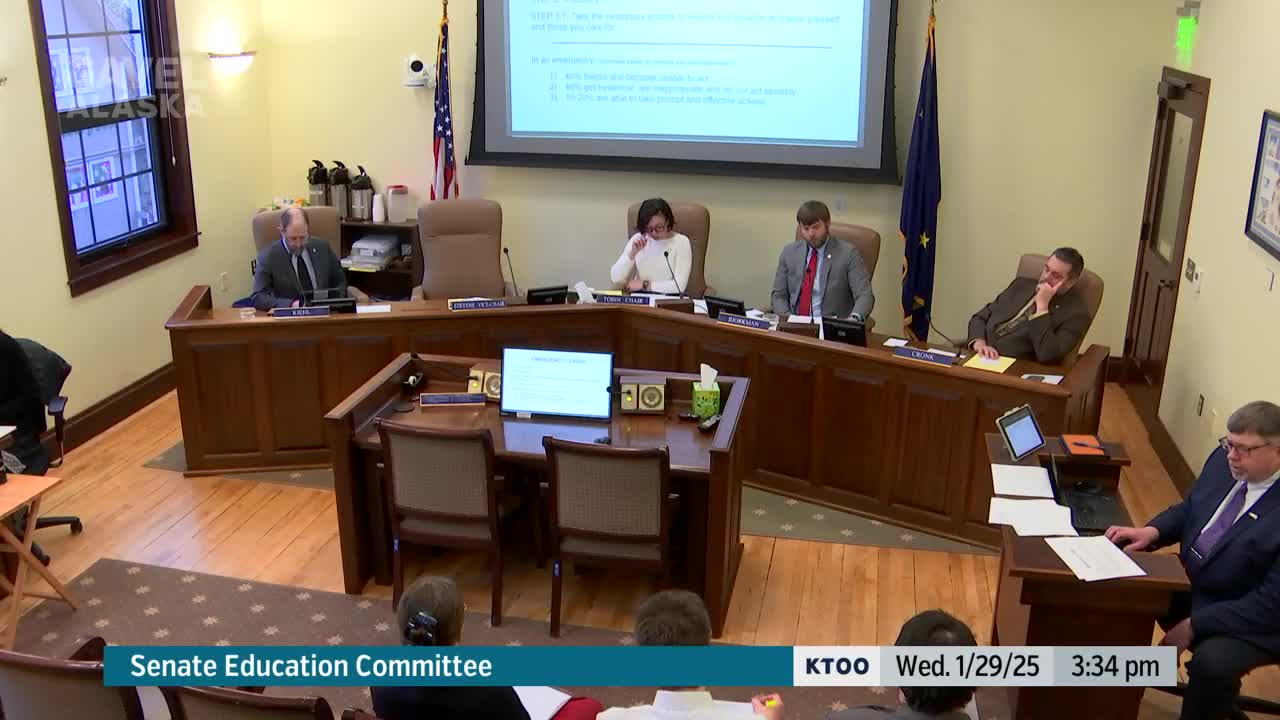Alaska education crisis worsens as Anchorage faces severe teacher turnover and recruitment challenges
January 29, 2025 | Education, Standing Committees, Senate, Committees, Legislative, Alaska
Thanks to Scribe from Workplace AI , all articles about Alaska are free for you to enjoy throughout 2025!

This article was created by AI using a video recording of the meeting. It summarizes the key points discussed, but for full details and context, please refer to the video of the full meeting. Link to Full Meeting
During the meeting, Mr. Ace highlighted that last year alone, 400 educators left the Anchorage School District (ASD), contributing to a total of over 1,500 departures in the past four years. This churn rate is particularly troubling, with nearly half of those resigning being early-career teachers, many of whom cited overwhelming workloads and large class sizes as major factors in their decision to leave. "The churn rate of early career educators is self-destructive," Ace stated, emphasizing that 48% of resignations occurred within the first five years of teaching.
The financial implications of this crisis are equally concerning. The Anchorage School District estimates it spends over $10 million annually on recruitment efforts, with each resignation costing approximately $27,000 in recruitment and training expenses. This financial strain, coupled with the emotional toll on educators, is leading to a decline in morale and work-life balance, further exacerbating the staffing crisis.
The meeting underscored the direct correlation between teacher retention and student success. With larger class sizes and a lack of experienced educators, students are facing increased behavioral issues and absenteeism, which ultimately hinder their academic performance. "Students and families are suffering as the staffing crisis in our schools leads to larger class sizes and excessive student absenteeism," Ace noted.
Legislators were urged to take action, with calls for increased funding to support smaller class sizes and better retention strategies for educators. "Alaska cannot attract enough educators to match the number leaving," Ace warned, stressing the need for a collaborative effort among educators, families, and legislators to address this urgent crisis.
As the meeting concluded, the message was clear: without immediate and effective intervention, Alaska's educational landscape risks further decline, impacting not just teachers but the future of its students and communities.
Converted from Senate Education Committee - January 29, 2025 meeting on January 29, 2025
Link to Full Meeting
Comments
View full meeting
This article is based on a recent meeting—watch the full video and explore the complete transcript for deeper insights into the discussion.
View full meeting